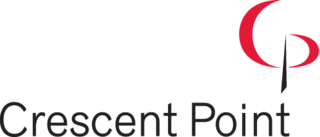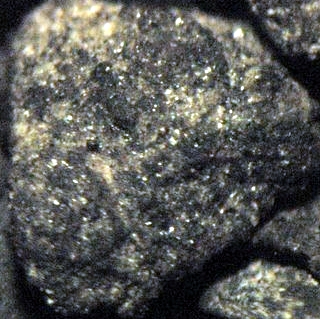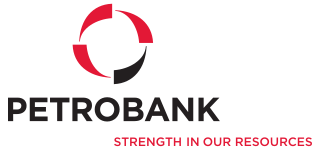
Ovintiv Inc. is an American independent petroleum company. The company was formed in 2020 through a restructuring of its Canadian predecessor, Encana. Ovintiv is incorporated in Delaware and headquartered in Denver, Colorado.

Petroleum production in Canada is a major industry which is important to the overall economy of North America. Canada has the third largest oil reserves in the world and is the world's fourth largest oil producer and fourth largest oil exporter. In 2019 it produced an average of 750,000 cubic metres per day (4.7 Mbbl/d) of crude oil and equivalent. Of that amount, 64% was upgraded from unconventional oil sands, and the remainder light crude oil, heavy crude oil and natural-gas condensate. Most of the Canadian petroleum production is exported, approximately 600,000 cubic metres per day (3.8 Mbbl/d) in 2019, with 98% of the exports going to the United States. Canada is by far the largest single source of oil imports to the United States, providing 43% of US crude oil imports in 2015.

APA Corporation is the holding company for Apache Corporation, an American company engaged in hydrocarbon exploration. It is organized in Delaware and headquartered in Houston. The company is ranked 431st on the Fortune 500.

Natural gas has been used almost as long as crude oil in Canada, but its commercial development was not as rapid. This is because of special properties of this energy commodity: it is a gas, and it frequently contains impurities. The technical challenges involved to first process and then pipe it to market are therefore considerable. Furthermore, the costs of pipeline building make the whole enterprise capital intensive, requiring both money and engineering expertise, and large enough markets to make the business profitable.

Crescent Point Energy Corp. is an oil and gas company based in Calgary, Alberta, Canada. The company focuses primarily on light oil production in southern Saskatchewan and central Alberta. Since its inception in 2001, Crescent Point has significantly increased its production. The company was founded in 2001 and is one of the largest independent oil and gas producers in Canada and has a significant presence in the Western Canadian Sedimentary Basin. The company's operations also include assets in the Williston Basin in the United States. Crescent Point Energy is listed on the Toronto Stock Exchange and is a publicly traded company.
Enerplus Corporation is one of Canada’s largest independent oil and gas producers. The company holds oil and natural gas property interest in the United States and in western Canada, in the provinces of Alberta, British Columbia and Saskatchewan. The company is based out of Calgary, Alberta and trades on both the Toronto Stock Exchange and the New York Stock Exchange. It was Canada's first income trust.
ARC Resources Ltd. (ARC) is a Canadian energy company with operations focused in the Montney resource play in Alberta and northeast British Columbia. The company has been operating since 1996. ARC pays a quarterly dividend to shareholders and its common shares trade on the Toronto Stock Exchange under the symbol ARX.

The Montney Formation is a stratigraphical unit of Lower Triassic age in the Western Canadian Sedimentary Basin in British Columbia and Alberta.

The Cardium Formation is a stratigraphic unit of Late Cretaceous age in the Western Canada Sedimentary Basin. It takes the name from the fossilized heart-shaped cockle shells in the family Cardiidae present. It was first described along the Bow River banks by James Hector in 1895. It is present throughout western Alberta and in northeastern British Columbia, and it is a major source of petroleum and natural gas.

Although there are numerous oil companies operating in Canada, as of 2009, the majority of production, refining and marketing was done by fewer than 20 of them. According to the 2013 edition of Forbes Global 2000, canoils.com and any other list that emphasizes market capitalization and revenue when sizing up companies, as of March 31, 2014 these are the largest Canada-based oil and gas companies.
Cenovus Energy Inc. is a Canadian integrated oil and natural gas company headquartered in Calgary, Alberta.
The Duvernay Formation is a stratigraphical unit of Frasnian age in the Western Canadian Sedimentary Basin.

Petrobank was an oil exploration, development, and production company based in Calgary, Canada. It operates through 4 units/subsidiaries, PetroBakken Energy in Canada, Petrominerales Ltd in Peru and Colombia, HBU in the heavy crude oil business, and its technology unit Archon Technologies Ltd . In 1986 the company changed its name from Petrobank Energy Resources Ltd. to Petrobank Energy and Resources Ltd. Though it has a significant resource base its ten patents for heavy oil extracting technology are becoming increasingly valuable to the company. In December 2010 the company received permission from the government of Alberta to produce oil sands bitumen at a new location in Dawson using a technique known as fireflooding, the third Petrobank operation that will use it; the 50% interest in Dawson was acquired in October from Shell Canada.

Athabasca Oil Corporation is a Canadian energy company with a focused strategy on the development of thermal and light oil assets. Situated in Alberta's Western Canadian Sedimentary Basin, the company has amassed a significant land base of extensive, high quality resources. Athabasca's common shares trade on the TSX under the symbol "ATH".

Questerre Energy Corporation (QEC) is an international energy exploration company headquartered in Calgary, Canada, and listed on the Toronto Stock Exchange and the Oslo Stock Exchange. It holds the largest acreage position in the Utica Shale in the Saint Lawrence Lowlands. Questerre also have operations in Saskatchewan and in the Montney Formation in Alberta.

The inclusion of unconventional shale gas with conventional gas reserves has caused a sharp increase in estimated recoverable natural gas in Canada. Until the 1990s success of hydraulic fracturing in the Barnett Shales of north Texas, shale gas was classed as "unconventional reserves" and was considered too expensive to recover. There are a number of prospective shale gas deposits in various stages of exploration and exploitation across the country, from British Columbia to Nova Scotia.

Vermilion Energy is an international oil and gas producer based in Calgary, Canada. It has operations in North America, Europe and Australia. Vermilion is listed on the Toronto Stock Exchange and the New York Stock Exchange.

Baytex Energy Corp. is an energy company based in Calgary, Alberta. The company is engaged in the acquisition, development and production of crude oil and natural gas in the Western Canadian Sedimentary Basin and in the Eagle Ford in the United States. Baytex's common shares trade on the Toronto Stock Exchange and on the New York Stock Exchange under the symbol BTE.

Fracking in Canada was first used in Alberta in 1953 to extract hydrocarbons from the giant Pembina oil field, the biggest conventional oil field in Alberta, which would have produced very little oil without fracturing. Since then, over 170,000 oil and gas wells have been fractured in Western Canada. Fracking is a process that stimulates natural gas or oil in wellbores to flow more easily by subjecting hydrocarbon reservoirs to pressure through the injection of fluids or gas at depth causing the rock to fracture or to widen existing cracks.

Encana Corporation was a Canadian independent petroleum company that existed from 2002 to 2020. The company, stylised as EnCana until 2010, was created by David P. O'Brien of PanCanadian Petroleum and Gwyn Morgan of the Alberta Energy Company through the merger of their companies. At the time of its creation Encana was the world's largest independent petroleum company by measure of its value, production, and reserves. Morgan ran the company from its inception through the end of 2005. During its early years, Encana established its reputation as Canada's flagship energy company and an icon of Western Canadian business. In September 2005 it became Canada's largest corporation by market capitalisation for a brief time.










